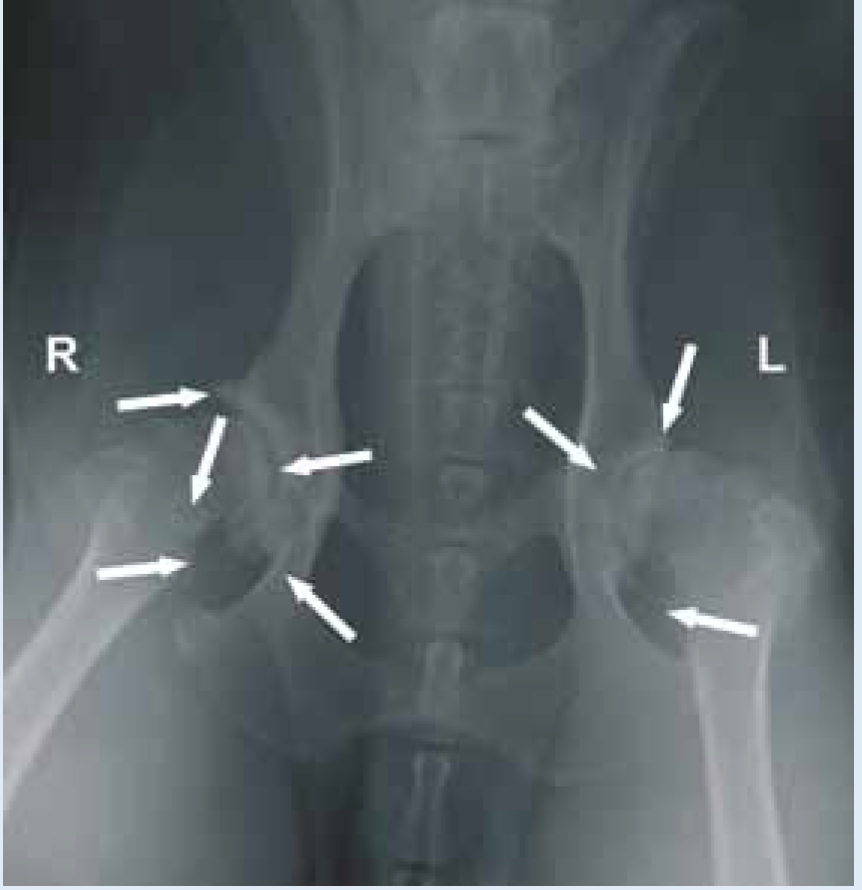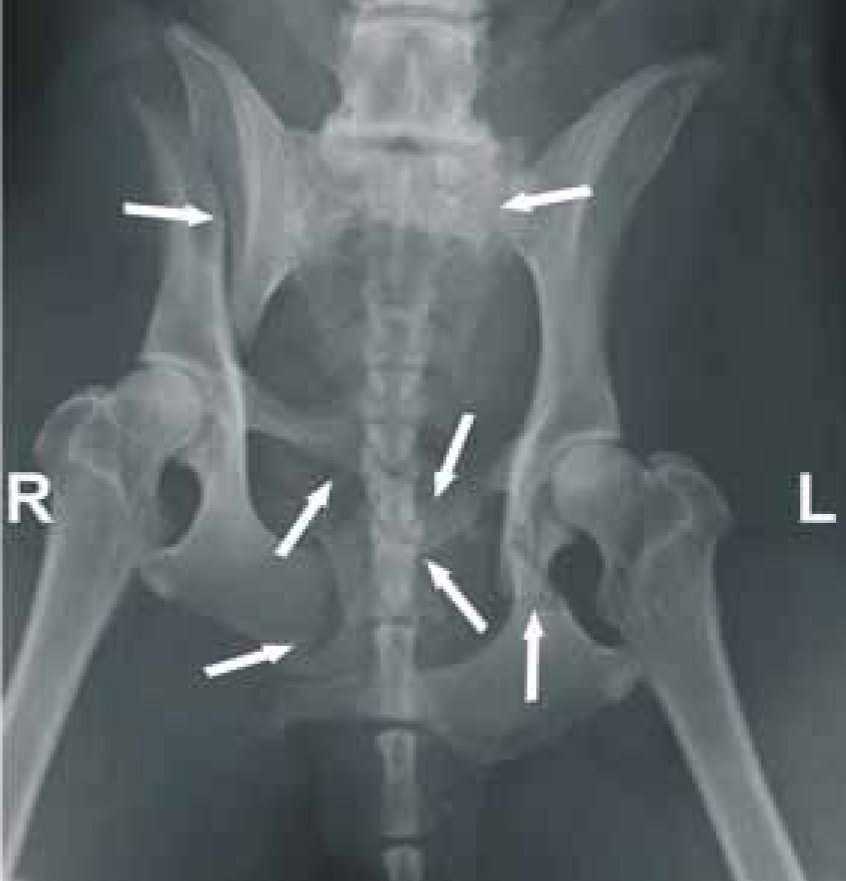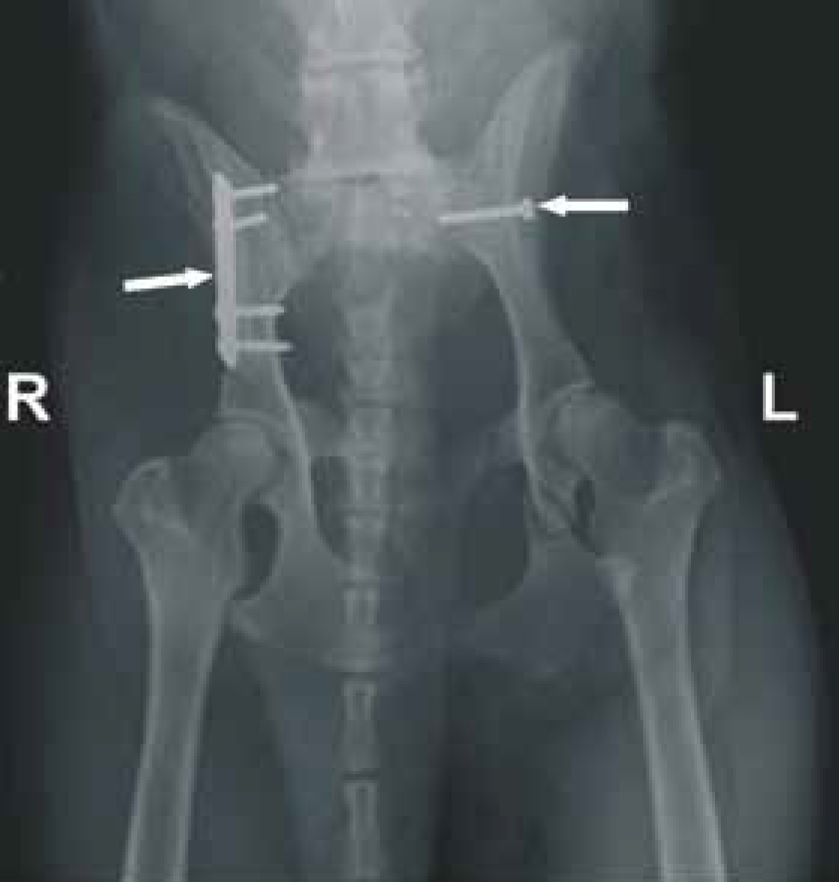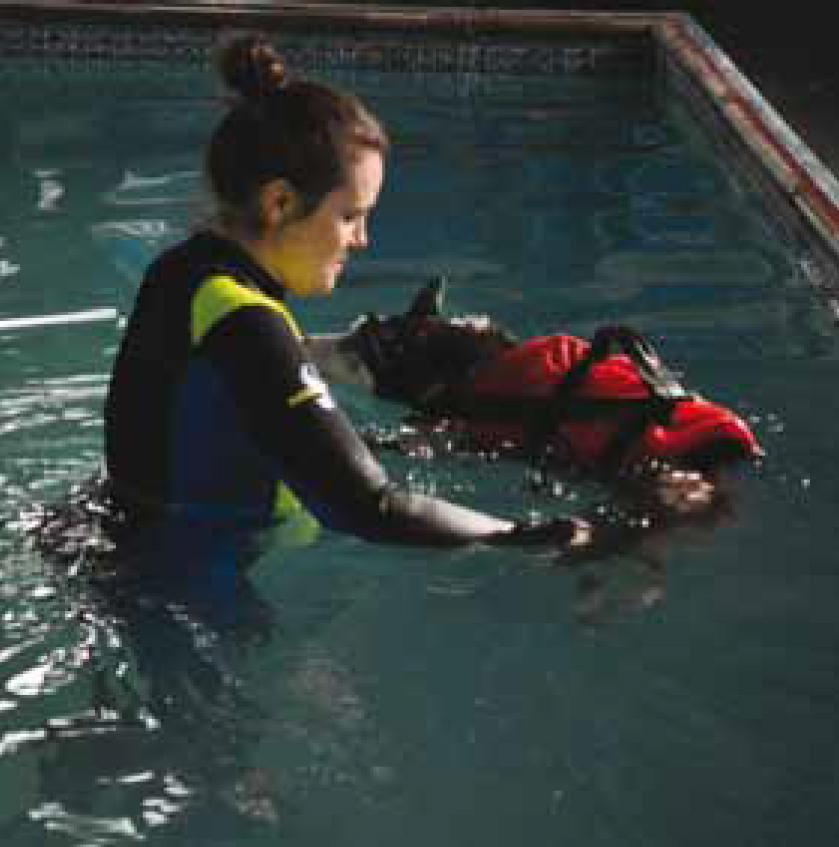Hydrotherapy has been used by humans as a form of rehabilitation for many years, with records dating back to 2400 BC when early Egyptians used water for healing purposes (Kelly et al, 2000). In more recent times, hydrotherapy has been used within veterinary science; modern-day canine hydrotherapy typically involves the use of an underwater treadmill (UWTM) or a swimming pool. There are both positive and negative factors to consider with either setting, including size of dog, temperament and reason for referral. In centres opened before 2004, swimming pools were favoured over UWTMs, whereas those centres that have opened since are more likely to have just an UWTM (Waining et al, 2011), which could be a refection of its cost and availability in the UK before 2004. In the author’s opinion, hydrother-apy for rehabilitation should centre on encouraging correct limb movement within the water, regardless of the modality in which it is delivered.
Current usage of hydrotherapy facilities
Most dogs using hydrotherapy centres in the UK are pedigree breeds, with the Labrador retriever representing 30% of all dogs seen (Waining et al, 2011). This could be because of the breed’s popularity, making up 8.2% of the overall dog population in the UK, susceptibility to musculoskeletal conditions or reputation as a good swimmer; thus owners are more likely to follow veterinary advice by taking their dog for hydrotherapy as part of a rehabilitation programme or they may simply be more likely to take their dog swimming for fun and fitness (Wain-ing et al, 2011).
Waining et al (2011) examined the reasons dogs were referred to a hydrotherapy facility, and found that 25% had suffered a cranial cruciate ligament rupture, 24% had hip dysplasia (HD) and 18% had oste-oarthritis, which highlights the common conditions for which hydrotherapy is used in the UK.
Properties of water
A number of the properties of water can be harnessed for use in canine hydrotherapy. A good understanding of these properties is needed for the design and implementation of a specific programme tailored to meet the needs of an individual dog, particularly for those dogs suffering from musculoskeletal conditions, as is the case in human hydrotherapy (Edlich et al, 1987).
Buoyancy
The principle of buoyancy was defined by Archimedes; when a body is wholly or partially immersed in a flu-id, the body experiences an upwards thrust equal to the weight of the water that it has displaced (Edlich et al, 1987). This means that in the pool, the dog’s mass is supported by the water and the dog’s limbs have a greater range of motion without putting joints under strain.
The water level of an UWTM can be changed as required, and the percentage bodyweight carried by a dog’s limbs while using the treadmill can be changed by varying depth — the deeper the water, the less bodyweight loaded onto the limbs (Levine et al, 2002).
Viscosity
The friction between water molecules, described as viscosity, provides resistance to the animal moving through it (Monk, 2007); this slows a dog’s movements compared with when on land, and reduces the likelihood of injury from sudden movements (Prankel, 2008). The viscosity also helps to build muscle strength and subsequent fitness (Sharp, 2008).
Surface tension
Surface tension is the force exerted between molecules at the surface of a body of liquid (Monk, 2007); thus there is more resistance to movement at the surface. This means that when a dog is swimming as part of a rehabilitation programme and its muscles are weak, it will find it hard to break the surface of the water with a limb; however, the dog would be able to move its limbs through the water below the surface. Care should be taken to avoid limbs thrashing above the surface of the water, as this will lead to excess energy expenditure.
Hydrostatic pressure
Pascal’s law states that fluid pressure is exerted on all surfaces of an immersed body while at rest and at any given depth (Monk, 2007). Hydrostatic pressure is the sum of this pressure on a body surface (Connell and Monk, 2010), which can have a massaging effect and reduce oedema by aiding venous return (Prankel, 2008).
Temperature
The water in which hydrotherapy takes place should ideally be between 26–30°C in order to increase the elasticity of cells, promote relaxation and provide pain relief (Prankel, 2008; Sharp, 2008; Rodrigues et al, 2011). The warm water also dilates the blood vessels, enabling more oxygenated blood to circulate around disused muscle cells, helping to eliminate the toxins that will have built up during their inactivity (Blundell, 2011).
Veterinary consent
Under the Veterinary Surgeons Act 1966 (Royal College of Veterinary Surgeons, 2010), responsibility for the diagnosis of an animal’s condition lies solely with the veterinary surgeon. It is not only good practice for the referring veterinary surgeon to complete a consent form giving permission to commence hydrotherapy, but it is also a requirement of both the Canine Hydrotherapy Association and the National Association of Registered Canine Hydrotherapists within the UK. A completed consent form may also aid the hydrotherapist in understanding the dog’s condition. It is important that the animal’s progress is discussed by the veterinary surgeon and hydrotherapist, so that adjustments to treatment can be made where appropriate (Prankel, 2008).
What is hydrotherapy used for?
A study by Waining et al (2011) focused on the use of canine hydrotherapy facilities within the UK. These facilities are used by a wide range of clientele for a number of different reasons, including as part of obesity management programmes. Many dogs are classed as overweight or obese, which is associated with orthopaedic disease (German, 2006). A study of Labrador retrievers found that dogs fed ad libitum were heavier than those fed a set amount of food twice daily, and suffered from a higher incidence of HD (Kealy et al, 1992). The cycle of weight gain associated with HD typically begins with the intake of excess calories leading to weight gain; degradation of joints occurs as a result of the extra mechanical stress caused by this weight and osteoarthritis with associated pain develops, which can lead to reluctance to exercise and further weight gain. Hydrotherapy can be used here as exercising in water is often less painful because of decreased joint loading, and weight loss occurs as a result of the utilization of energy reserves (Chauvet et al, 2011).
Dogs can build and maintain fitness during hy-drotherapy sessions (Figure 1), and training such as in-water retrieval can also take place in a pool. Hydrotherapy can be used in pre-operative muscle conditioning, such as before a hip replacement, with the aim of reducing recovery time (Prankel, 2008). It can also be used as part of the conservative management of developmental orthopaedic diseases in dogs, such as HD and osteochodrosis dessicans (LaFond et al, 2002). The progression of chronic degenerative radiculomyelopathy can be slowed (Kline, 2002), and hydrotherapy has its place post operatively, aiding in the recovery from orthopaedic surgery such as the repair of a cranial cruciate ligament (Monk et al, 2006). The start date for hydrotherapy varies between conditions and the surgical technique used, as some require a longer healing time before rehabilitation can begin. With some surgeries, this can be as early as 14 days post operatively, once wounds have healed (Connell and Monk, 2010).
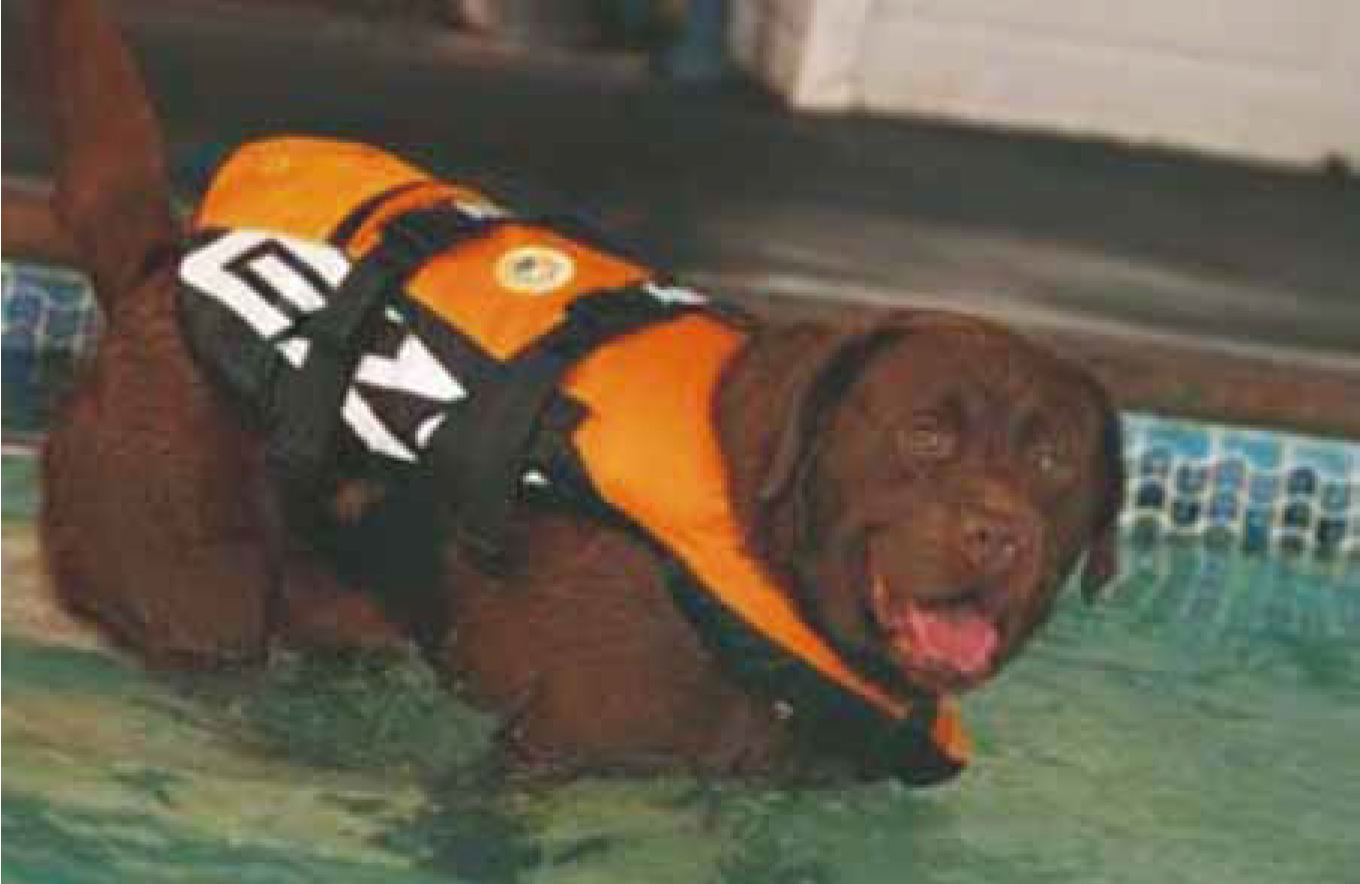
Dogs that are suffering from intervertebral disc disease may regain some function post operatively through hydrotherapy; if surgery is not an option for that animal, hydrotherapy could be used to maintain mobility and relieve pain (Kline, 2002). Hydrostatic pressure on a dog’s limbs can help with posture re-education. Hydrotherapy may also be used palliatively to provide some pain relief, enabling dogs suffering from terminal disease, such as an os-teosarcoma, to exercise in a safe environment (Prankel, 2008; Sharp, 2008).
Emotional wellbeing can be improved through relaxation and endorphin release when in the water (Randall, 2010), and some owners have reported a renewed vigour in their dog (Prankel, 2008). Evidence from human hydrotherapy suggests that the energy cost of swimming is approximately four times that of running the same distance on land, and this theory has been applied in canine hydro-therapy (Monk, 2007).
Contraindications
Even though written consent from a veterinary surgeon is a prerequisite for hydrotherapy, it is important for the hydrotherapist to assess each dog before the commencement of every session to ensure fitness to take part.
The therapist needs to recognize any conditions that would be classed as a contraindication, such as:
In humans it has been suggested that massage therapy and hydrotherapy may increase the incidence of tumour metastasis, as a result of the increased blood and lymph flow to the areas treated (Curties, 2000). This may also be the case in dogs, although further work is needed in this area.
The hydrotherapist may not be physically able to handle an aggressive dog in the water; if the veterinary surgeon feels that the dog will benefit from receiving hydrotherapy, other steps may have to be taken to enable the session to take place, such as conducting the session from the side of the pool or on an UWTM. This should ensure that the safety of the dog, therapist or owner is not compromised. Pain can cause defensive aggression, which can explain why a typically placid dog may display uncharacteristic behaviours (Borchelt, 1983). An understanding of what is deemed a sensible reason to terminate a session early is essential, with reasons including getting overly stressed, emesis or defecation in the water, swallowing excessive amounts of water, choking, aggression and fatigue.
A veterinary surgeon may refer a dog for hydro-therapy that suffers from a condition that would ordinarily contraindicate commencement of therapy, believing that the benefits outweigh the risk to the animal’s health; this should be discussed with all parties involved. For example, an ageing, overweight cross-breed with laryngeal collapse referred for hy-drotherapy as post-operative rehabilitation for a cranial cruciate repair should ideally use an UWTM as opposed to a swimming pool, as this will cause less respiratory distress. Great care should be taken to monitor the dog continually and to recognize fatigue and signs of respiratory distress.
From the wide range of uses of hydrotherapy, two case studies have been selected for presentation: the conservative management of HD in a young male Labrador retriever (Case study 1); and post-operative rehabilitation of a paraplegic female Border Collie with multiple pelvic fractures following a road traffic accident (Case study 2). Both animals received veterinary treatment at Hillcrest Animal Hospital, Chorley, and used hydrotherapy facilities at Canine Therapies, Preston.
Conclusion
Canine hydrotherapy is used for a number of reasons in the form of a swimming pool or an UWTM. It is important that the veterinary surgeon works closely with the hydrotherapist when they refer patients, as this will help in the creation of a tailored treatment plan for that individual patient. Although research into the benefits of canine hydrotherapy has been published for a number of conditions, future work is needed in order to quantify its value within the veterinary world. This research should help to demonstrate the different areas in which hydrotherapy can help dogs, and should increase the level of awareness among veterinary professionals of the benefits gained from hydrotherapy in both first opinion and referral practice.

